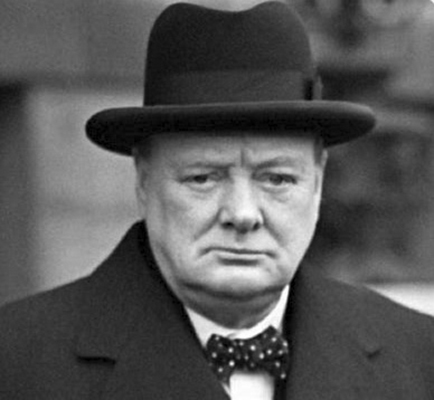 Widely known as the greatest statesman of the 20th century and one of the most admired Britons ever, a Nobel Prize winner and historian who, at his death, had sold more history books than any other historian, Sir Winston Churchill (1874-1965) was also an avid and accomplished painter.
Widely known as the greatest statesman of the 20th century and one of the most admired Britons ever, a Nobel Prize winner and historian who, at his death, had sold more history books than any other historian, Sir Winston Churchill (1874-1965) was also an avid and accomplished painter.
Winston Churchill was age 40 when he began to paint — at one of the lowest moments of his life. It was June 1915, shortly after his resignation as First Lord of the Admiralty in the wake of the Dardanelles campaign. One Sunday afternoon, his sister-in-law Lady Gwendeline handed him a paintbrush belonging to his young nephew. In his 1921 essay “Painting as a Pastime” Churchill recalled, “And then it was that the Muse of Painting came to my rescue.” Painting provided a refuge from the stresses of politics and publishing, and from what Churchill called “the black dog” of depression.
He was inspired by the Impressionists and enjoyed painting en plein air (i.e. outdoors). At home and in his travels, Churchill was accompanied by his paints, brushes, canvases, and an easel. His medium of choice was oil, and his preferred subjects were landscapes and seascapes. His approximately 550 canvases — or his “daubs” as he called them — tell the story of his travels across Europe, North America, and North Africa with scenes of the south of France as his most frequent subject.
Although largely self-taught, his style and technique evolved through mentoring from accomplished painters such as Sir Oswald Birley, Sir John and Hazel Lavery, Paul Maze, Sir William Nicholson, and Walter Sickert. He copied paintings by Charles Daubigny, John Singer Sargent, and Paul Cézanne, some loaned to him by his political colleague, Philip Sassoon.
Throughout his life Churchill spoke with modesty about the quality of his work. In 1921, he sent six paintings under an assumed name, Charles Morin, to an exhibition at the Galerie Druet in Paris. In 1947 he again employed a pseudonym, David Winter, when submitting two works to the Royal Academy of Arts annual summer exhibition — his true name revealed only after the two were accepted. He received further recognition as an artist when the Royal Academy elected him an Honorary Academician Extraordinary in 1948, and held a solo exhibition of his works that toured internationally in 1958-59 — the institution’s first and only exhibition of an amateur artist.
Given the demand on his time and his accomplishments as a politician and as an author, the quality and productivity of his artistic output is difficult to fathom. In contemplating this extraordinary individual, one must account for this remarkable aspect.









